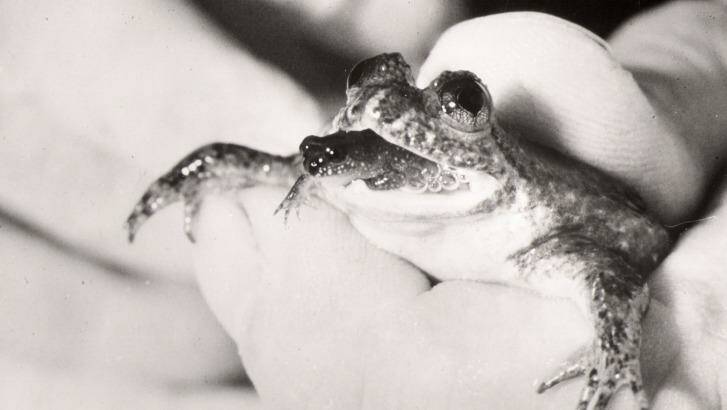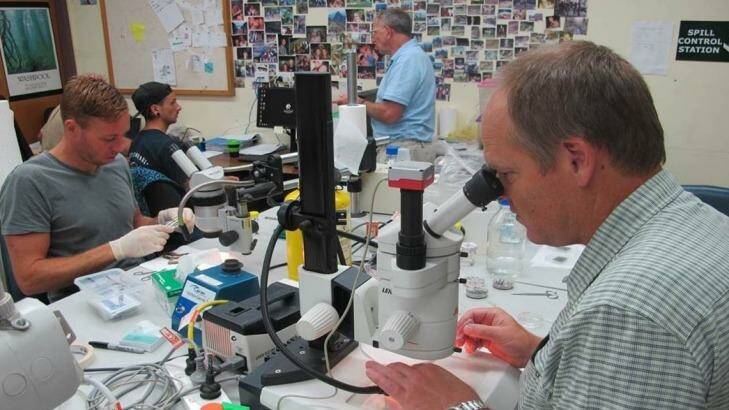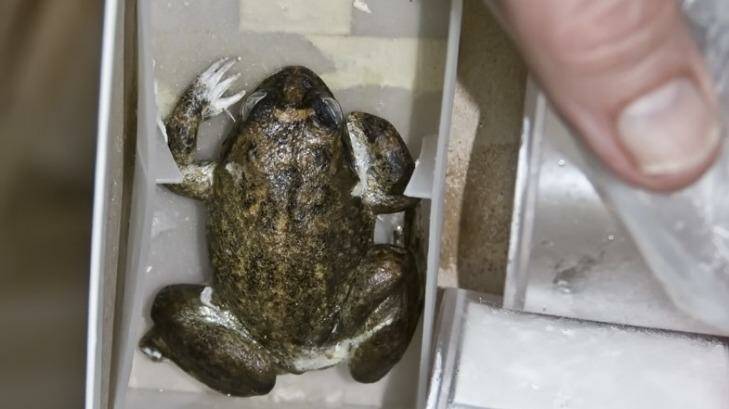



For the past six years, Australian researchers have had just one week every year to chase the stuff of science fiction dreams.
They're working towards something incredible, the ability to bring species back to life long after they've disappeared from the earth - de-extinction.
For now scientists from The Lazarus Project - named for the biblical Lazarus of Bethany brought back to life by Jesus and not the decidedly average 2008 Paul Walker movie - are trying to restore Australia's southern gastric-brooding frog.
But the University of New South Wales' (UNSW) Professor Michael Archer and his team hope they can take their work much further.
Jurassic Park is out of reach they believe, because DNA from dinosaur remains isn't of a high enough quality.
But they hope their work with hybrid cells could eventually help bring back other mammals, such as the Tasmanian tiger or woolly mammoth.
The team includes "frog wranglers" Professor Michael Mahony, Dr John Clulow and Simon Clulow at the University of Newcastle and cellular experts Professor Andrew French from the University of Melbourne and Dr Jitong Guo from UNSW.
The researchers made a major breakthrough in 2013, growing embryos containing the revived DNA of the extinct frog, the crucial first step in their attempt to bring a species back to life.
They used an advanced technique known as somatic cell nuclear transfer to insert dead genetic material from the extinct frog's nucleus into the donor eggs of another species of living frog.
The scientists confirmed the breakthrough late last year when they found DNA from the extinct frog in several cells, proving beyond doubt the DNA was replicating.
"Now that we know that's happening, that's the encouragement we need to keep going," Professor Archer said.
"It's critical and if we couldn't demonstrate that that DNA was replicating we would be wasting our time."
But the team has hit a snag.
The DNA is replicating but the embryos aren't developing properly.
Along with the DNA from the extinct frog, the scientists found traces of the host frog's supposedly de-activated DNA in the embryos and some of the cells.
The 70-year-old "going on 35" thinks these two sets of instructions existing side by side could be confusing the embryo and holding up development.
Further constraining The Lazarus Project's lofty goal is the breeding cycle of the distantly related great barred frog, which they use to "host" the nuclei of the extinct frog.
"The thing that holds us back that way is that these frogs tend to produce usable eggs only once a year," Professor Archer said.
"So we get this brief window, once a year in which this work gets done.
"So in effect, although we've had about six years of this sort of activity, we've only had one week a year to actually do it."
This year the researchers took a step back and discovered they had a problem with their transfer process.
They trialled the process on two still-living species and hit the same snag as when they tried to clone the extinct amphibian.
It sounds like a setback but Professor Archer, who was curator of mammals at the Queensland Museum when he first started thinking about "de-extincting" the Tasmanian tiger, is happy with the result.

